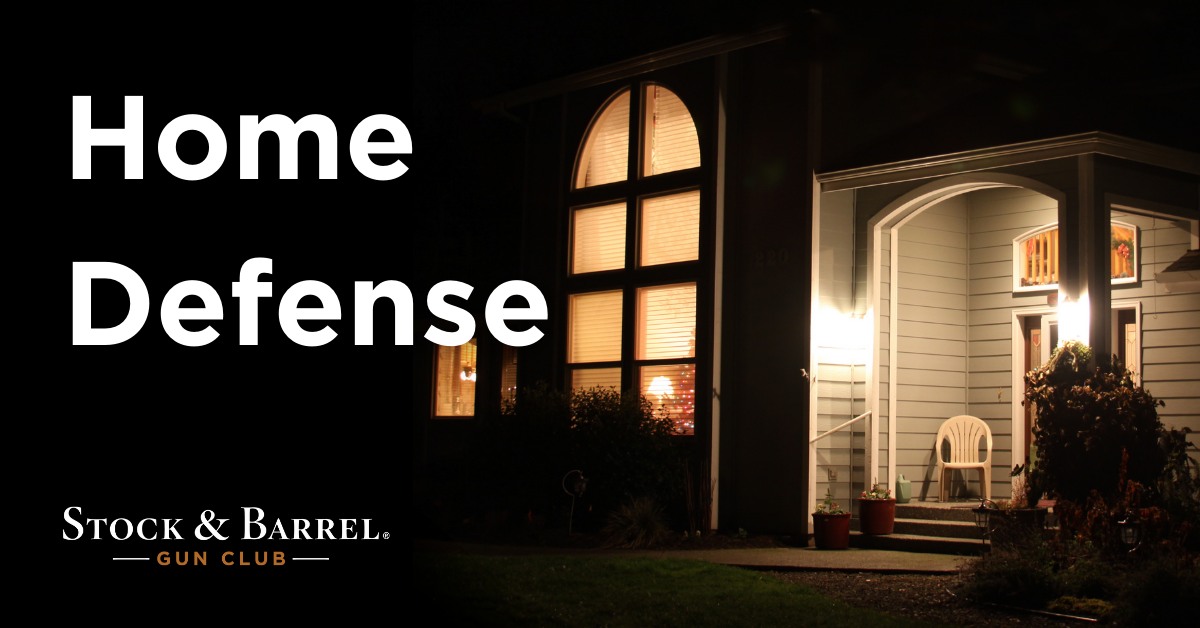Disclaimer: The author of this article is not a licensed attorney or sworn law enforcement officer, and nothing herein shall constitute legal advice. Know your state’s laws regarding gun ownership and the use of deadly force.
An unfortunate truth of gun ownership, particularly for new gun owners, is that many people believe simply having a gun is all that’s required to successfully defend the home. This couldn’t be farther from the truth. Whether we’re talking about guns, knives, tasers or baseball bats, the tool you choose to protect your home is just that – a tool. Just like any other tool, if you don’t know how to use it all you have is an unconventional paperweight. There is a famous quote from renowned firearms trainer Jeff Cooper that goes something like this: “Owning a gun doesn’t make you armed any more than owning a guitar makes you a musician.” This is sage advice, and it behooves any new or prospective gun owner to heed this wisdom with gravity. The bottom line is that self-defense lies in a state of mind more than the possession of an object. But if owning a gun doesn’t constitute being ready to defend your home, what does? An easy way to look at home defense is the same way you might look at your home itself…
FOUNDATIONAL KNOWLEDGE
First and foremost, if you intend for a firearm to be used in a home defense role, you must understand the legal risks, protections, and procedures involved with firing your weapon in anger against another person. This can start with a simple internet search about the use-of-force laws in your state. On one end are so-called castle doctrine states, where a person’s home is considered their castle, defensible by lethal force against any criminal threat. In some cases, your “castle” starts at the property line. In others, it applies only inside the walls of the house itself. On the other end are duty-to-retreat laws, which state that you have a legal obligation to evade a direct threat before using force. Depending on how these laws are written, if a person breaks into your living room while you’re sitting on the couch, you may be legally required to retreat to a bedroom or bathroom, if at all possible, before using any kind of force to defend. It is also worth understanding how your homeowner’s or renter’s insurance applies (or doesn’t) in this context. In almost all cases, these policies do not in any way cover damages, injuries, or civil liabilities resulting from a use-of-force incident. Coverage for such events typically requires a separate insurance policy. If you currently hold a specific concealed weapons insurance policy, contact them to ask about how your policy applies to home defense. While some states may have protections built into their castle doctrine, stand-your-ground, or victim protection laws, such protections are sporadic and vary substantially between states and municipalities. Know your laws and understand your coverage for these events.
BUILD STRONG WALLS
Once you have a firm grasp of legal exposure, you can undertake preparations for the mechanics of defending your home. The number one principle to remember here is that the best weapon you have for home defense is your home itself. Your house, townhouse, or apartment can itself be optimized for defense in a way that, ideally, prevents you from ever having to reach for a gun.
If you own or rent a house, include any yards or property as well. There are some very simple, non-offensive, commonly-accepted measures that people use all the time – often without even considering them as “defensive measures”. Fencing, motion-activated lighting, wireless camera systems, smart doorbells, and heavy locks are all routinely accepted as smart practices for homeowners. Even smart landscaping can be leveraged for home defense – for example, keep your front walkway clear of large shrubs or overgrown bushes so ambush attackers don’t have any place to lie in wait for you. Conversely, you can use tall trees or thick bushes in front of windows to increase privacy and prevent passers-by from being able to see inside your home. If you’re worried about prowlers or peeping times hiding behind the bushes to peer into your house, consider planting bushes with thorns, spines, or barbs to dissuade this activity – sometimes a simple “pain penalty” is enough to extinguish crimes of opportunity.
Inside your home, consider the use of wedges against your entry doors at night or even sliding a chair behind the front door before going to bed. Adding storm doors or screen doors as an added barrier to entry can buy you time to respond. We also like the advice of “never sleep in a blacked-out house”. Before you go to sleep, turn on a couple of small lights around the house. Even something as small as the hood light over your stove, or plug-in night lights along hallways and under windows will allow you to navigate safely and identify threats quickly if you have to hop out of bed to investigate a bump in the night. This is also especially important if you live with family members or roommates who have different schedules than you – a little well-placed lighting can be the difference between identifying an intruder or accidentally injuring a loved one. If you do have others in the home with you, be sure to agree on procedures for dealing with a possible break-in, especially during sleep hours. Everyone rushing out of their rooms all at once can create dangerous chaos in a hurry – especially if more than one of you are armed. Depending on the size and layout of your house, having a designated responder, or dividing the house up into sections for individuals to be responsible for are possible ways to deconflict over-responding.
PUT A ROOF ON IT
Consider carefully the specific weapons you use to defend your home. Handguns are the most convenient to store and the easiest to maneuver within tight spaces. But they also require the highest level of skill to use effectively, particularly if you may have to shoot near or around other residents.
Carbines and shotguns are a little more unwieldy and may have to be left in the open – propped against a wall or unsecured under the bed. But weapons with buttstocks are easier to shoot more accurately and can be better customized with force-multiplying accessories like weapon-mounted lights, red dot optics, and slings to free up your hands for other tasks like opening doors or rendering aid to injured loved ones.
Rifle-caliber pistols with arm braces or short-barreled rifles may split the difference on a lot of these factors but, in the case of SBR’s and SBS’s, additional registrations and legal requirements become a factor. If Class III NFA-regulated items are legal in your area, a little-discussed “accessory” for home defense guns is a suppressor. You will most likely not be wearing ear protection to investigate a bump in the night. If you do need to fire your weapon, a suppressor will minimize the flash and concussion, preserving your hearing and allowing you to better communicate with other people in the home or with emergency dispatchers immediately after firing your weapon.
Regardless of where you live, or what your home looks like, the prospect of defending it with lethal force is a complex issue not to be taken lightly. Know your laws, implement precautionary measures and, if armed response is part of your home defense continuum, train properly and regularly.
You May Also Be Interested In These Classes…
-
Surviving A Home Invasion in Chanhassen and Eagan
-
MN Permit To Carry – Conceal Carry in Chanhassen and Eagan
-
Close Quarters Shooting I in Chanhassen and Eagan
-
Low- Light / No Light Shooting in Chanhassen and Eagan





